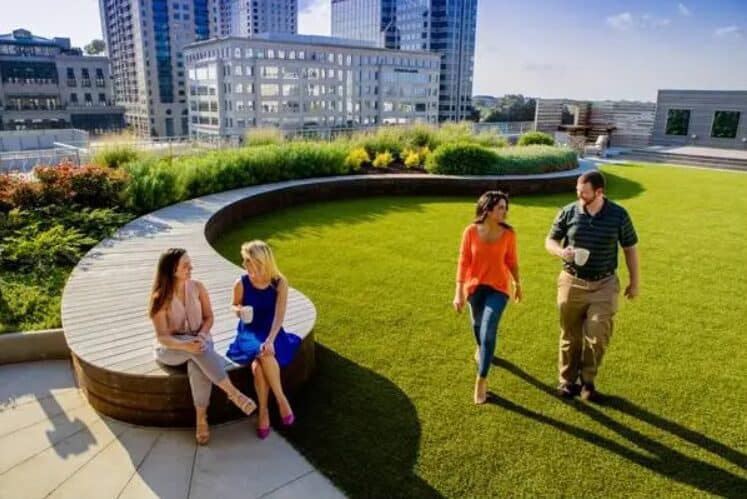Extensive roof landscaping
For low-maintenance plants that require a small layer of substrate, for example, weeding once a year is sufficient. As a rule, shillocks and other undemanding, low flowers, mosses, medicinal plants or simply lawn grass are chosen for this landscaping.
When extensively planting roofs, the plants selected must be long-lasting, resistant to cold, solar radiation, and drought. In the case of extensive greening of roofs, no irrigation system is installed, so plants that constantly need moisture are not suitable here.
Intensive greening of the roof
On the roof, a so-called garden is planted with a greater variety of plants, taller plants that require constant care (watering, fertilization, etc.). Perennial plants are used for greening, green lawn areas are also created, bushes and trees are planted. It probably goes without saying that such roof landscaping will require more investment.
The advantage of intensive planting is that you can create a unique corner of nature with paths, decorative bushes, even dwarf fruit trees. A green roof provides an opportunity for a new living space. The intensively greened roof with formed walkways, rest areas looks and can be used as a roof garden.

